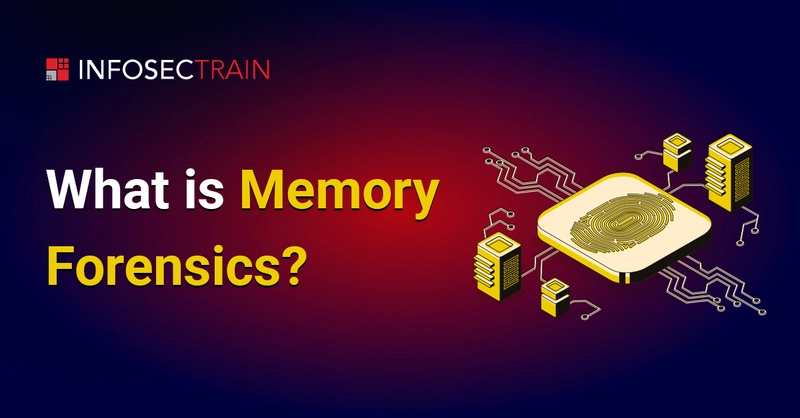What is Memory Forensics?
Memory forensics, or RAM forensics, involves analyzing a system's volatile memory to identify security incidents, malware infections, unauthorized activities, or insider threats. It is essential for both proactive threat hunting and post-incident investigations. Unlike traditional disk forensics, which focuses on hard drives, memory forensics provides real-time insights into active processes, open network connections, and hidden threats that may not leave traces on disk.
Importance of Memory Forensics
In today's world of sophisticated cyberattacks, traditional forensic techniques aren’t enough. Here’s why memory forensics is a game-changer:
● Detects Fileless Malware: Many advanced threats never touch the disk; they run directly in RAM. Memory forensics helps spot these threats before they disappear.
● Finds Insider Threats: If an employee is engaging in malicious activities, memory analysis can reveal unauthorized processes, credential dumps, and suspicious activity.
● Uncovers Rootkits and Advanced Persistent Threats (APTs): Attackers use rootkits to maintain stealth. Memory forensics can expose hidden processes that evade antivirus solutions.
● Incident Response and Threat Hunting: It allows organizations to quickly respond to breaches by examining an infected system's active memory before critical forensic evidence is lost.
How Does Memory Forensics Work?
Memory forensics involves three key steps:
1. Acquiring Memory Data
Before you can analyze memory, you need to capture it. This is done using specialized tools like:
● Volatility Framework (popular open-source tool)
● Rekall
● Belkasoft RAM Capturer
● FTK Imager
● Magnet RAM Capture
2. Analyzing the Memory Dump
Once acquired, the memory dump is examined to extract valuable artifacts like:
● Running processes
● Open network connections
● Passwords and encryption keys
● Malware injections
● Suspicious DLLs and API hooks
3. Investigating Malicious Activities
Cybersecurity teams use pattern recognition, signature-based detection, and behavioral analysis to spot anomalies and track down attackers before they cause further damage.
Best Tools for Memory Forensics
Below are some of the most widely used memory forensics tools:
● Volatility Framework: The industry standard for RAM analysis.
● Rekall: An advanced open-source framework for memory analysis.
● Belkasoft RAM Capturer: A Lightweight tool for capturing volatile memory.
● DumpIt: A simple tool for quick RAM acquisition.
● MemGator: A tool for forensic memory acquisition and parsing.
Memory Forensics in Action: Real-World Use Cases
Cybercriminals leave traces in memory, and forensic investigators leverage this to catch hackers, uncover espionage, and stop cyberattacks. Here are some real-world scenarios where memory forensics played a critical role:
● Ransomware Attacks: Memory forensics has been used in some ransomware investigations to retrieve encryption keys from active RAM before they are erased by the malware. However, its effectiveness varies based on the attacker's methods and whether the keys are still present in memory.
● Nation-State Attacks: Memory forensics has been crucial in detecting and analyzing state-sponsored cyberattacks targeting governments and enterprises.
● Banking Trojans: Financial institutions use memory forensics to detect stealthy banking malware that traditional security tools fail to catch.
Advanced Cyber Threat Hunting and DFIR Training with InfosecTrain
Memory forensics is a vital component of modern cybersecurity, enabling professionals to detect and respond to advanced threats like fileless malware and in-memory exploits. Staying ahead of cybercriminals requires mastering these techniques, and InfosecTrain’s Advanced Cyber Threat Hunting and DFIR Training course offers the hands-on expertise needed to excel in this field. Elevate your cybersecurity career with specialized training and gain the skills to combat evolving cyber threats effectively.





Top comments (0)